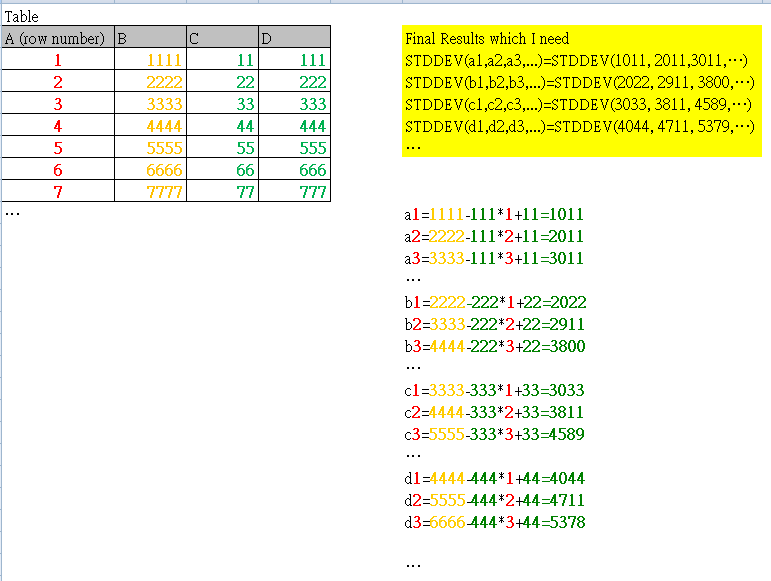|
On 01/21/2015 11:02 AM, Pierre Hsieh
wrote:
If you have a four column table as defined in your spreadsheet, with column names A,B,C,D select rowsum = B - (C*A) +D; might get you the sums you need but I don't understand the grouping of these for the STDDEV function |

